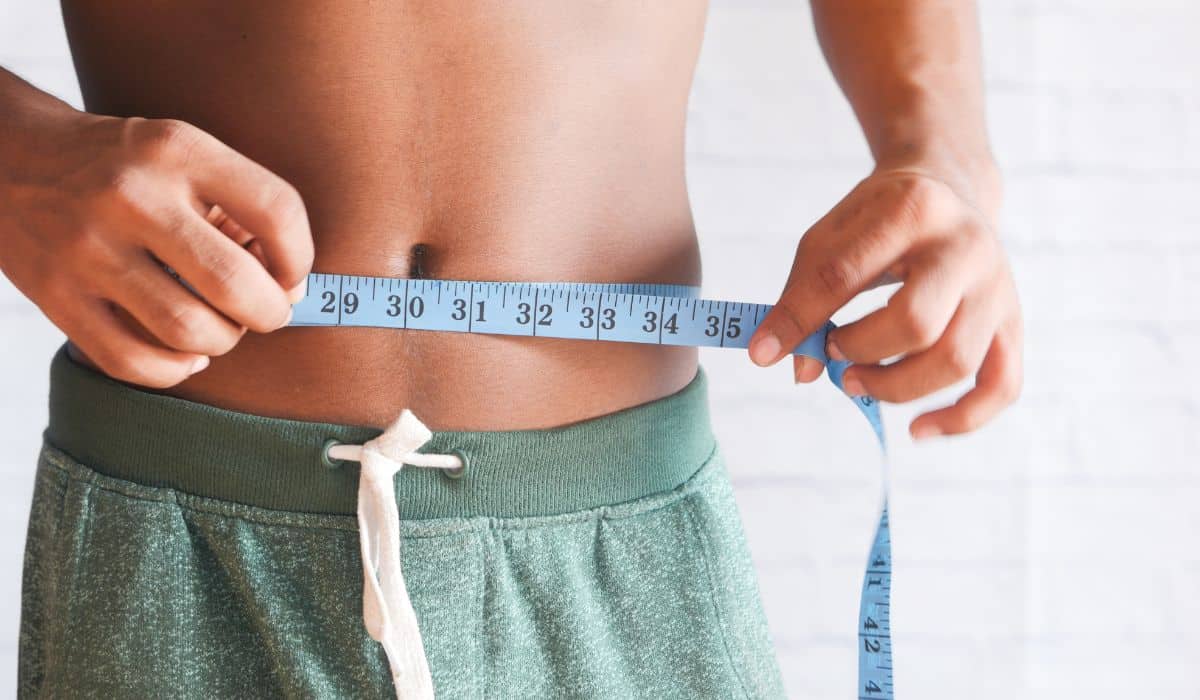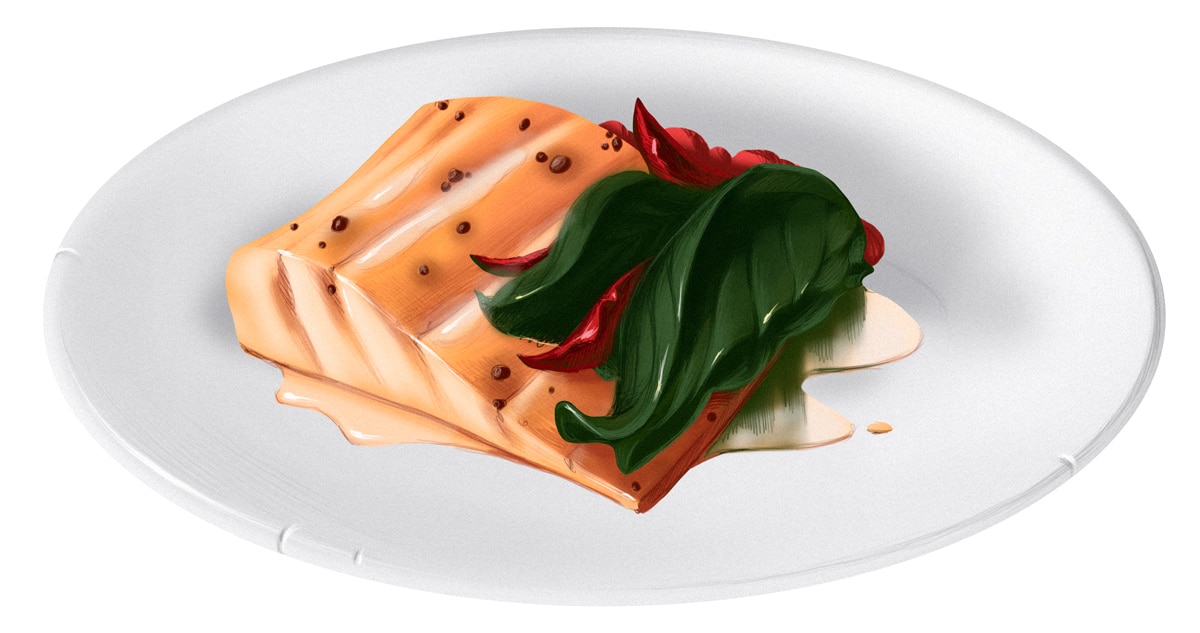
The typical Paleo diet ends up being slightly higher in protein, higher in fat, and lower in carbs than the standard American diet, so Paleo often gets pigeonholed as a “high-protein diet.” But it doesn’t have to be. You can do Paleo with any combination of protein, carbs, and fat you like. If you want a very high-fat, low-carb, low-protein true ketogenic diet, that diet can easily be Paleo. If you want a higher-carb, moderate-fat, low-protein pescetarian or even vegetarian diet, that diet can also be Paleo.
On the other hand, protein gets a lot of good press for its ability to help with weight loss, and there does seem to be some truth to that. That doesn't mean to eat as much as physically possible, or to eat only protein: too much of a good thing is not better.
So how much protein will put you in the optimal range for weight loss? How much food does that actually imply? And do you have to make any special effort to achieve that amount of protein on Paleo, or does it happen automatically?
Benefits of Protein for Weight Loss
The research on high-protein diets is tricky, partly because any time you’re adding protein to a diet, you’re either adding more calories or decreasing something else. Many high-protein diets are also low-carb diets – is the benefit from the increased protein or the decreased carbs? It’s hard to say, but there is some evidence that protein per se may be valuable. This study goes over some of the reasons why higher protein intake should be useful for weight loss.
- Metabolic benefits: about 25% of the calories you eat as protein are used to digest the protein itself. For fat and carbs, that number is much lower.
- Preserving lean tissue. Higher-protein diets preserve muscle mass during weight loss, which makes it easier to maintain weight and is also great for your health. The review didn’t touch on this, but other studies have also found that protein may help preserve bone mass during weight loss.
- Satiety: Most people feel full faster eating a higher-protein meal than they do eating lower-protein meals higher in carbs and fat. Protein stimulates satiety hormones and there may also be a “protein drive” where your body keeps eating until it gets enough protein.
Okay, okay, so far so good. But many actual studies in free-living humans over a reasonably long period of time don’t show significant benefits from trying to increase protein intake. And there’s a big glaring problem that probably explains that: compliance. Many longer-term studies had high dropout rates and other compliance issues. To quote the review:
“According to the dietary food records collected in most of the studies, no groups met their prescribed protein content for either diet. The higher-protein diet groups reduced their protein content throughout the study, whereas the lower-protein diet groups increased their protein content, both potentially returning back to their habitual protein intakes at baseline”
If most people can’t actually keep up with your specially-designed super-effective study diet, then the study diet is a lousy diet for weight loss in the real world. In fact, some evidence actually suggests that it doesn’t matter what macronutrient composition you use; the real factor is compliance. If you put people on a low-calorie diet (of any protein content) they’ll lose weight to the degree that they stick to it; if they can’t, they won’t lose weight or they’ll regain it all.
So in other words, high-protein diets may be useful, but you’d have to find a high-protein diet people can actually stick to – and forget about the naive idea that “willpower” can provide long-term compliance with a diet that leaves people hungry, socially isolated, unsatisfied, or otherwise miserable. That’s just not going to happen, and it’s not because people with obesity are lazy and stupid; it’s because very few humans of any weight can voluntarily make themselves miserable for long periods of time when the solution to their misery is beckoning from every aisle in the grocery store.
If you can Stick to Paleo, you can Stick to a “High-Protein” Diet
So what made it so hard to stick to the higher-protein diet? Were these people being asked to eat some crazy all-chicken-breast diet that no normal human would voluntarily choose? Not really, actually. The authors cited an optimal weight-loss protein intake as 1.2-1.6g/kg of body weight per day, which works out to 89–119 grams/day for women or 104–138 grams/day for men. They recommended 25-30 grams of protein per meal.

All those numbers mean nothing to most people, so here’s the translation: just eat protein-rich foods at every meal and you’ll be fine. 25-30 grams of protein per meal is very achievable on Paleo with no particular effort. Say for example you eat a pork chop for dinner: that’s around 40 grams of protein. Or maybe you’d rather have beef: 4 ounces (around 1 adult-sized serving) of cooked 85/15 ground beef has around 29 grams of protein. Perhaps you’re more of a fish lover: half a cooked salmon fillet has 39 grams of protein. But if you’re eating Paleo meals, then that much protein should come naturally.
Of course, all kinds of other things could also make it hard to stick to the study diets. Just to name a few: cost (protein is typically pricier than carbs and fat), habits (people tend to slip back into familiar eating patterns without realizing it), and social/cultural factors (nobody wants to be the weirdo at a restaurant with chicken breast in a Tupperware). But there are ways of working around all those things to have a successful Paleo experience: here’s how to save money, how to save more money, how to manage cravings, and an index page full of posts on just about anything else you might be struggling with.
If you can stick to a basic Paleo template of eating high-quality animal foods at every meal, you can stick to the “high-protein diet” that showed benefit in these studies, and it won’t even take any extra effort.
Myths and Nonsense
Just to clear up a few pervasive myths about protein intake:
“If high protein is good, higher-protein must be better” – this is the kind of logic that leaves people feeling simultaneously bloated and ravenously hungry, stuffing down pouch after pouch of water-packed tuna without understanding why they never feel full. “High-protein” does not mean “eat only protein;” most studies use 30% of calories as the upper limit of "high." Even on a high-protein diet, most of your calories will come from carbs and fat.
“You need special supplements and protein powders to get enough protein” – this may be true for Olympic-level powerlifters, but it’s not true for most people who just want to look and feel good.
“Protein = magical weight loss.” The average American aged 19-30 eats 91 grams of protein per day. That’s basically compliant with the 25-30 gram/meal suggestion, but the average American is still overweight. It’s possible that the protein is doing a lot of good, and that the average American would be even more overweight with a lower protein intake, but it’s obvious that protein is not a magical appetite suppressant, hormone cure-all, metabolism booster, or anything else.
Summing it Up
Protein is not a magic nutrient, but getting adequate protein is important for everyone and getting 25-30 grams of protein at every meal may be helpful for weight loss. The trick is finding a diet that provides that much protein and is also sustainable in the long run - but if you're eating a typical Paleo diet, you're probably fine.
If you’re eating Paleo and not starving yourself, you’re basically already hitting the weight-loss protein recommendations without having to try. There’s no need to obsess about getting tons of protein, replace your meals with protein shakes, or shun all other meat in favor of water-packed tuna: if you can stick to Paleo, you can stick with the kind of protein intake that shows benefits for weight loss.





Leave a Reply